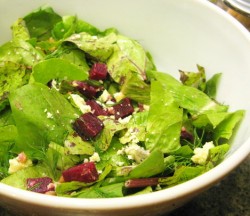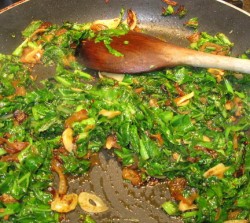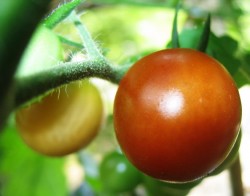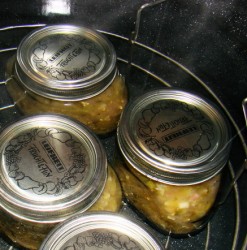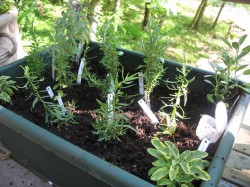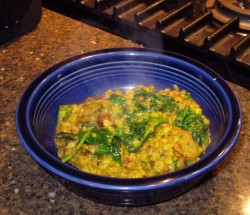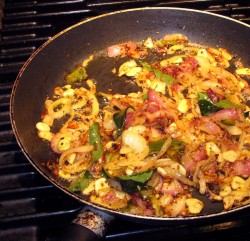And The Beet Goes On…My Wrist (And In My Salad)
I really used to hate beets.
Well, okay, that isn’t true. I loved beets, so long as I never had to eat them.
I loved the color of them–the intoxicating magenta, crimson and garnet shades arranged in concentric rings were fascinating to me as a kid. The colors of beets drew me to them like a moth to a candle flame, but their flavor repelled me just as strongly. They tasted like dirt to me, and their rich, velvety texture and lovely hues could never override that big negative in my mind or on my tongue.
But, when I was a kid, I loved helping Grandma can them. I got to play with them–packing their slippery slices, dripping with roseate juices that stained my fingertips Aurora-pink. (I was -way- into Greek and Roman mythology as a kid, and like to think of myself as “rosy-fingered dawn.” Yeah, I read Homer as a small kid. Once a geek, always a geek…)
So you get the picture–I loved the color of beets, but not so much their flavor–when I was a kid, they tasted like dirt, in a bad way.
Now that I am adult, I think they taste earthy in a good way. As I write these sentences, I am struck by the fact that the word “earthy” in this context is a nice, more palatable sounding way to say that beets taste like dirt. So, the fact is, beets still taste like dirt, but now I like that taste.
I am not sure what that says about me, but I do find it amusing.
I still like the way beets look–their color–which is the same exact shade as the “Mulberry” Crayola crayons back in the day and was my favorite color as a kid, by the way–so much so that I own clothing that shade. And as you can see in the photograph above, I own a bracelet in that color.
A bracelet that is made of, guess what? Beets!
Beets turned into parchment and layered over copper, then finished with what appears to be lacquer.
This bracelet is the work of artist Margaret Dorffman, who makes neat stuff out of vegetables and fruits. The bowls she makes are really cool, but I like the beet bracelet the best, and everyone knows it because I have worn the thing nearly every day since I got it for Mother’s Day.
And every time I look at it I smile, and remember those long afternoons I spent with my Grandma, “putting up” beets as pickles or just plain, in jars that shimmered like garnets after we were done.
My other favorite thing to do with beets besides wear them is to eat them in salads. Long time readers know this because I have shared salad recipes that include roasted beets a couple of times over the years. For an early summer salad, there is Roasted Beet Salad with Chevre and Blueberry Vinaigrette. And for the autumn beet harvest, there is October Beet Salad with Mizuna and Pears.
Well, now, here is another beet salad, this one for late spring–it includes red-speckled fresh spring lettuces, and Bordeaux Spinach–a gorgeous and delicious variety with brilliant beet-red veins and stems.. There are also toasted black walnut bits and Gorgonzola cheese, though truly any blue-veined cheese would do. I found that the strong earthy–there goes that word again–flavor of the cheese married well with the sweetness of the beets and the light astringent quality of the beets and walnuts.
Of course if black walnuts are not available to you–they are native to Appalachia, and we have a tree in our yard–you can use good old English walnuts. Just be sure to toast them over medium heat in a cast iron skillet before you use them. It makes them oh so tastier if you do that. And it is simple–just heat your cast iron pan over the stove until it is nice and hot, then put in your walnut pieces and shake them in the pan for about four minutes, or until you can smell their lovely browned aroma wafting up and tickling your nose. Then dump them out on a plate to cool, and when they are at room temperature again, sprinkle them over your salad.
Now it is your turn–I urge everyone to let the beet go on–on your wrist or on your plate, it doesn’t matter to me. I just think it is a vegetable that is suffering from underappreciation, and that is sad to me. Maybe I am just feeling sad for all those years I missed out on eating beets, and I am trying to make up for it by evangelizing on their behalf–but it doesn’t matter. Beets are wonderful, they are beautiful and they deserve to be eaten and loved by, if not everyone, by as many people as I can convince need to try them.
Roasted Beet Salad With Bordeaux Spinach., Walnuts and Gorgonzola
Ingredients:
2 medium sized beets
1 tablespoon olive oil
3 cups young leaves of Bordeaux spinach, torn into bite-sized pieces if necessary
3 cups young lettuce leaves, torn into bite-sized pieces
1/2 cup black or English walnut pieces, toasted as directed above and cooled
1/4 cup (or more if you really like cheese) crumbled Gorgonzola cheese
1 teaspoon honey
1/2 tablespoon Dijon-type mustard
1/4 tsp salt
1/8 cup balsamic vinegar
1/3 to 1/2 cup excellent olive oil, or other fine, fresh oil
1/2 teaspoon Aleppo pepper or freshly ground black pepper to taste
Method:
Heat oven to 375 degrees. Line a baking pan with foil, and rub with a little of the olive oil.
Trim greens and large roots from beets, scrub skin thoroughly. If you are worried about juice staining your hands, wear latex gloves while handling beets. (Golden beets stain less.) Dry beets and put into baking pan, then drizzle with olive oil.
Put pan into oven and roast, uncovered, until beets have wrinkled, somewhat dried out looking skins and have shrunken a bit and are easily pierced with a fork. (Depending on the size of your beets, this can take from forty-five minutes to an hour.)
Remove from oven, allow to cool enough to handle. Using a paring knife and your fingers, peel off skin–it should be quite easy to remove. Allow beets to cool completely once they are skinned.
Cut beets into 1/2″ dice.
Arrange salad leaves in a bowl, then sprinkle with diced beets, walnuts and Gorgonzola.
Put remaining ingredients into a small jar and shake well to combine. Pour over salad and toss well to combine, then serve immediately.
Weekend Kat Blogging: She’s Getting To Be a Big Girl
Kat’s growth and development continue apace; she is now able to talk quite well, and she narrates everything. She also knows some of her favorite books by heart and will pretty well recite them to herself–and everyone else–at any given opportunity.
Which, fortunately, is really, really cute.
She is cruising toward potty-training on her own. I decided that considering, all of her other developmental milestones were delayed slightly, to just let her tell me when she was ready for the potty. Any attempts on my and Zak’s part to get her out of diapers before she was ready are going to be doomed to failure, because Kat has a combination of personality traits which while endearing, would make any imposition of change requiring physical readiness futile.
For one thing–she is very sensitive. She is afraid of sudden loud noises, for example–even a firm, somewhat louder than normal “No!” will garner instant tears. (This does not stop either Zak or I from imposing limits on Kat, so I know that her reaction is natural–not an attempt to manipulate us.) She is also sensitive to physical stimuli–food textures bug her a bit–not as much as they do other kids–but they do get to her.
Add to the sensitivity a strong will and thoughtful demeanor and you can see why we would hesitate to push Kat into doing something as important as potty training before she is ready. She is strong-willed, but oddly, not in a direct, confrontational way. She is just quietly willful. And her thoughtfulness–she watches everything that goes on around her, and thinks about it and absorbs it. She is very, very observant, and she loves to watch all sorts of action around her, and then she will imitate the action after time has passed and she has absorbed as much information as she can about her objective.
For example–we take her to the park a lot, since our yard is primarily a steep slope. Not good for little persons intent on running about, since it would result in little persons falling down and rolling down said slope only to stop when hitting the brick wall of our house. Ouch. So, we take her to the park. And she is not particularly interested in the play equipment. She will go down the slide a couple of times and then, that is it. She wants to go exploring. So, we take walks. She looks at all the flowers, trees, leaves, birds, rocks and any water she can get near. She will sit and quietly observe ants for the longest time. And, in this particular park, there is a large open field where barn swallows swoop and fly, just skimming the ground, about a foot up from the grass as they catch tiny flying insects.
A couple of days ago, Kat and I went to the park and she insisted on running into the field into the midst of the barn swallows. The birds got used to us, and would swoop down, at her eye-level, and whiz past only a couple of feet away. And she watched them dip and swoop, the sun shimmering violet and indigo on their feathers, and after watching them for a good five minutes, she held her arms out and started wheeling, dipping and swaying, running in a wide figure 8, imitating the swallows. When I asked what she was doing, she said, “Bird dance!”
So, as I said, she is cruising toward potty training on her own. She doesn’t like the feel of a wet diaper on her, and will insist on being changed. She also tells us when she has pooped–or is about to. And she has shown much interest in the goings-on in the bathroom.
So, it is coming, thankfully. I really didn’t want to have to fight with her over it–not only because I hate fighting with kids, but because it would have been detrimental to the task at hand.
In less scatalogical news, but equally interesting and entertaining, Kat has also learned how to string beads. We have a video of her carefully stringing plastic pony beads on an elastic cord. The first thing she made was a necklace which she insisted was for her big sister. As I tied off the ends, I asked her who the necklace was for, and she said, “Ganna!”
So, we met Morganna, James and Brittney downtown on the college green and Kat got to give her sister the first fruits of her beading.
It was so cute. Morganna even looked like she was going to cry.
She’ll be mad I told everyone, though.
Broccoli Rabe Saute–Indian Style
The number and type of greens available at the Athens Farmer’s Market expands every season; this year, Larry and Kim Cowdery of Cowdery Farms, have had success with one of my favorite greens–broccoli rabe. Also known as broccoli raab or rapini, this Italian brassica is closely related to turnips, and is similar to my favorite Chinese green, gai lan. It is more bitter than gai lan, however, and its stalks are not as meaty and tender as the creamy jade-colored stalks of gai lan.
I love broccoli rabe in Italian dishes–especially when it is paired with other strong, earthy flavors like Gorgonzola cheese and toasted walnuts (Fettucine with Rapini Gorgonzola and Walnuts) or fresh shiitake mushrooms (Brittney’s Skillet Spaghetti with Shiitake and Rapini), but I wanted to know how it would taste sauteed in the Indian style, with spices, caramelized onions and garlic and lemon juice.
I suspected that the slightly nutty, bitter green would taste delicious when paired with the earthy aroma of toasted whole cumin and mustard seeds, and I am of the opinion that any green is made tastier with liberal application of sweetly browned onions and garlic. And of course, a little bit of chili pepper makes everything, including chocolate, taste better.
It turned out quite well–broccoli rabe or rapini, sauteed in this way makes a great, quick vegetable dish to go with more complex, long-cooked vegetable or meat curries or grilled meat dishes
Indian Style Sauteed Broccoli Rabe
Ingredients:
3 tablespoons ghee or canola oil
1 1/2 cups thinly sliced onions
1/2 teaspoon salt
6 large cloves garlic, peeled and very thinly sliced
chili flakes to taste
2 teaspoons cumin seeds
2 teaspoons black mustard seeds
1 pound broccoli rabe/rapini, chopped into 1″ wide pieces
juice of one large lemon (about two generous tablespoons)
salt to taste
Method:
Heat ghee or oil in a heavy skillet. Add onions and sprinkle with salt. Cook, stirring, until the onions are a deep golden brown. Add garlic, chili flakes, garlic, cumin and mustard and continue cooking until the onions are deep reddish brown, the garlic is golden and the mustard seeds pop.
Add the broccoli rabe and stir to coat with the ghee or oil and then after it wilts slightly, add the lemon juice, and continue cooking, stirring, until the leaves wilt and turn a deep green.
Add salt to taste and serve immediately.
Farming In The City
Farming in the city doesn’t sound as, well, sexy as “Sex In The City,” but it is still a catchy title.
As most of my longtime readers know, I grew up half in the city and half on a farm. On the weekdays, I lived in Charleston, West Virginia, where I attended the closest things to inner-city schools West Virginia has–Piedmont Elementary, Roosevelt Junior High School and Charleston High School. We had drug problems, violent altercations and even bomb scares now and again. Nothing like the school shootings one hears about now, but the schools were pretty rough, and the neighborhood where we lived wasn’t exactly suburban, if you know what I mean.
Then, on the weekends–nearly every weekend–and for weeks in the summer, I lived on my grandparents’ farm in rural Putnam County–only forty-five minutes from Charleston, but a place that was worlds away from city life. Time went slower on the farm, oddly slower, considering all of the activities we managed to cram into each day spent there. Planting corn, digging potatoes, putting up bean poles, mending fences, feeding cattle, hogs and chickens, picking strawberries, freezing peas, canning tomatoes, pulling turnips, making pickles, harvesting black walnuts, catching fish, butchering hogs, building cold frames, cutting and baling hay–the work on that farm was never-ending.
It was never ending, and it was wonderful. Living on that farm was like nothing else you can imagine–the dank, rich smell of the earth in the early spring during plowing, the sound of hens clucking and singing in the foggy still hours of dawn, the sight of maple trees gone to flame in the woods in October, and the sweet, fragrant burst of the first strawberry, warmed in the May sun and filled with juice.
I grew up learning all sorts of skills that were beyond the ken of my friends at school, skills that made it seem as if I lived part time in another century. When I described what I did on my weekends, or worse, during the summer, to the kids at Roosevelt or Charleston High, more than one of them laughed in disbelief and proclaimed that it sounded like I grew up in one of Laura Ingalls Wilder’s books. They would listen, goggle-eyed and scoffing when I would describe rapturously, how much fun it was to hang out with my family and crack black walnuts with hammers or spend back-breaking hours sweating in the potato field, digging tubers.
I could never convey that no matter how much work we did, and how hard it was, we still had time to play. It didn’t matter how much work we did in a day, we still had time for long walks in the woods where we saw squirrels chasing each other, wild turkeys foraging in the brush, and once, a rabbit plucked from the ground by a red-tailed hawk who dove like a flashing arrow from the sky, and just as fast, was gone again. We always had time for swimming or fishing in the pond, or catching tadpoles or toadlets. There was always a moment for a pick-up game of one-on-one basketball with an uncle, cousin or neighbor. There was time to ride the pony, time to run in circles and chase the farm dogs, time to climb trees and time to twirl in the tire swing that swayed beneath the huge black locust tree next to the barn.
And in the evenings, there was time for reading and gathering to watch a television program or two. And there was always time to lay under the night sky and stare up in awe at the stars–the stars that were unimaginably bright and seemed so close, far from the light pollution and smog of the city.
Nor could I make them understand that all of the food we produced tasted so much better. It was too much work, my friends said–why work so much when you can just go to the supermarket? Why grow lettuce from seeds when it was so cheap at the store? Why bother gathering eggs, why butcher cows, why harvest corn, gather walnuts? Why can tomatoes, why freeze beans, why make jelly or jam or pickles? They all are at the store….
I could never convince them that corn tasted unimaginably sweet and sunny when you picked it one minute, husked it the next and dropped it for only a minute in boiling water just seconds later. Or how good eggs gathered from the warmth of a hen’s nest one minute, then fried the next. I could never explain the richness of the yolk–the brilliant orange color that came from hens who gathered bugs and grass and snippets of weeds from the garden. Or how sweet and clean-tasting a catfish you caught yourself tasted. Or how the meat of a steer who was raised on grass and hay and corn we grew ourselves and who was never mistreated, but petted and loved every day of his life was so much better. Or how blackberry jelly made from berries gathered along the edge of the woods tasted exactly like the long days of summer!
They never understood, and I always felt that maybe they were right–I had grown up straddling two realities, two times, two lifestyles and I never felt quite at home in either. (The rural kids I played with all summer long liked me, but thought I was quite strange, very bookish and unable to speak their language without sounding awkward. I never could call a dragonfly a “snakedoctor,” or say “crick” or “yonder” without making a fool of myself.)
But it seems that some of those kids, and their peers around the country, and some from the generations after us, now that they have grown up, have finally learned what I tried to teach some of them years ago. The old ways that Laura Ingalls Wilder wrote about, of preserving food for the winter, of self-reliance and of being intimately involved in the production of your own food are coming back into vogue, and not just by the “back-to-the-landers” who left the rat race years ago and moved to rural communities and started farms of their own. The folks who have started valuing self reliance and food production, who have started raising chickens, growing vegetables and fruits in their yards and canning their produce are city dwellers.
Kitchen gardening is on the rise; folks are digging up their yards and planting on terraces even more than before, and community gardens are filling up and expanding. In municipalities which allow it, backyard farmers are adding a few chickens for their eggs and their bug-hunting capabilities. (Not to mention their entertainment value–chickens really are fun to watch.) And for those who grow their own food or those who buy too much lovely produce at farm stands or pick-your-own farms or farmer’s markets, it is only natural to learn how to preserve these foods by canning, pickling, making fruit preserves or freezing.
The recession, a growing local food movement, and mistrust in our food supply arising from various incidents of contamination in the food chain, have propelled this burgeoning interest, but the truth is–I don’t really care why all of this is happening.
I only care that it is happening.
Because the truth is–we humans -need- to be connected to our food supply. Having responsibility for some of our food connects us to the cycles of life, the seasons, and the natural world in a way that I believe is as healthy for our minds and spirits as it is for our bodies. I think it is good for our souls to be involved in the growing and preservation of some of our food–it gets outside, in the sun (which helps our bodies make the all-important vitamin D!) and in the air. It connects us with the world in a visceral way, in a way that feeds us, body and soul.
Remember, I believe that food is not just physical fuel for our bodies–it feeds our spirits and minds as well. When we learn new skills, we keep our minds supple and alert–our intellects grow stronger with each skill we study and learn. Our bodies grow fit with work to do, real work, and our spirits, when connected with the world, grow and develop peacefully.
I have read comments from cynics who decry people who grow their own vegetables in their yards or keep chickens or can tomatoes from the farmer’s market as “foolish” at best or “idiots” at worst. I don’t care what people like that say–attacking those who live life differently than you do is not a good endorsement for your point of view. If one doesn’t want to grow food–don’t.
I won’t look down on them for it.
But, the truth is, I will feel sorry for them.
Because I cannot make them understand; my words are inadequate to describe the richness of experience that comes from such a life.
Palak Dal–South Indian Style
When I was a little girl, I loved spinach.
I loved it raw, I loved it cooked, I ate it frozen or canned.
It didn’t matter. It was my favorite vegetable. (And not just because Popeye loved it, either. I just loved the taste of it.)
So, it should come as no surprise that when spinach comes into season in the spring, I buy bunches of it and eat it in salads and cook it as many ways as I can think of. (But I do have to admit that Zak only likes it raw in salads, so whatever I cook is usually only eaten by myself, Morganna, Brittney and sometimes, Kat. But that is okay–so long as Zak is happy and the spinach is eaten, it doesn’t bother me what form in which it is eaten.)
Last night, I had about a half-pound of spinach that needed to be cooked, and I decided to make good on my promise to start learning to cook more South Indian recipes. I love the Northern Indian style dals with spinach, so I decided to try my hand at making South Indian palak dal.
In India, both in the northern regions and the southern dals are flavored with a technique called “tarka” or “tempering.” This involves heating ghee or oil, and cooking spices, herbs, and/or aromatics like onions, garlic and chilies until everything is brown and toasty. Then, just before the dal is served, the entire pan full of flavored ghee or oil along with the spices and such are stirred into the pot of dal.
This makes a delicious, amazingly well-flavored vegetarian dish that, I swear, will convert people who swear they dislike Indian food or vegetarian food. I know it worked with both of my parents–they like “that Indian lentil soup you make” as they call it. And the bonus is–if you already like lentils or vegetarian food or Indian food, a good dal will make you feel cozy and homey inside–happy, secure and full of goodness.
I know that when I am feeling under the weather, I like to eat a nice, highly-flavored dal full of vegetables and spices, because it is like being wrapped in the warm embrace of my grandmother’s quilt. It is highly comforting, and it has the added bonus that the flavorful spices and aromatics can help fight bacterial infections that can cause sore throats, and their strong flavors and aromas can help clear stuffed sinuses.
The differences between South and North Indian dals seems to be in the spicing, and in some cases, the types of lentils used in them. While both often use whole spices in the tarka, as well as ground turmeric, and onions, garlic and ginger are common, I have found that a combination of mustard seeds, fresh or frozen curry leaves, asafoetida (hing), and fresh or dried chilies are hallmarks of South Indian dals. Tamarind is also common, giving a fruity, tart flavor, although I have to admit that sometimes I substitute lemon juice if I don’t happen to have tamarind.
For this recipe, I used a combination of masoor dal and split unskinned moong dal because that is what I had the most of in the house! I like the combination, because the moong dal gives texture and bits of color to the smooth, pale yellow masoor dal. And they both have a nice, earthy flavor that goes with the nutty mustard and cumin seeds and the musky, smoky aroma of the curry leaves.
The proportions of dal to spinach in this recipe are variable. You can make it with more lentils and less spinach like I did, or you can make it with more spinach. You can also make it thick and hearty like I did or thin and soupy, which is also really tasty and satisfying. If you want it thinner, add more water when you cook the lentils. You can also use frozen spinach instead of fresh, but if you do, after you thaw the spinach out, squeeze the extra water out, by taking handfuls of spinach and squeezing it as hard as you can in your fist and shaking the water away. If you leave the water in the spinach, you risk watering down the flavor of your dal, and you don’t want to do that!
Anyway, here is my easy spinach dal with flavors reminiscent of the regions of South India. Cook up a pot of it, and taste something fresh, spicy, earthy and delicious.
South Indian Style Spinach Dal
Ingredients:
1 cup masoor dal, picked over and rinsed
1 cup split unskinned moong dal, picked over and rinsed
water as needed
big pinch of asafoetida
1 teaspoon turmeric
2 teaspoons grated fresh ginger root
3 tablespoons ghee, canola oil, coconut oil or butter
2 cups thinly sliced onions
1 teaspoon salt
5 cloves garlic, peeled and thinly sliced
1 fresh hot chili–whatever kind you like, thinly sliced
1 1/2 teaspoons cumin seeds
2 teaspoons mustard seeds
10 whole curry leaves, fresh or frozen
dried chili flakes to taste–optional
8 ounces fresh spinach leaves, rinsed and dried, large veins and stems removed
1/2 teaspoon tamarind concentrate or 1 tablespoon lemon juice
salt as needed to taste
Put both dals in a large saucepan with enough water to cover by 1″. Add asafoetida, turmeric, and ginger root, and bring to a simmer over medium heat. Cook, stirring and adding water as needed until lentils are soft. The masoor dal will break down to a puree, while the moong dal will just soften.
When the lentils are cooked, remove them from heat and cover to keep warm.
While lentils cook, melt ghee or heat oil in a wide, heavy-bottomed skillet. Add onions and sprinkle with salt, and cook, stirring, until they are a dark golden color. Add the garlic, and fresh chili, and cook until the garlic just begins to take on a bit of color. Add the cumin, mustard seeds, curry leaves and the chili flakes if you are using them and cook, stirring constantly until the onions are a dark, reddish brown, the garlic is deep gold, the fresh chili is browned on the edges and the mustard seeds pop like popcorn.
Add spinach to the pan, and cook, stirring until it wilts. At this point, uncover the lentils, and pour the entire contents of the skillet into the saucepan and stir it all together well. Add the tamarind or lemon juice and taste for salt, adding more if necessary.
This is enough to serve four people with rice and a raita or another vegetable dish for a good springtime vegetarian meal.
Powered by WordPress. Graphics by Zak Kramer.
Design update by Daniel Trout.
Entries and comments feeds.


